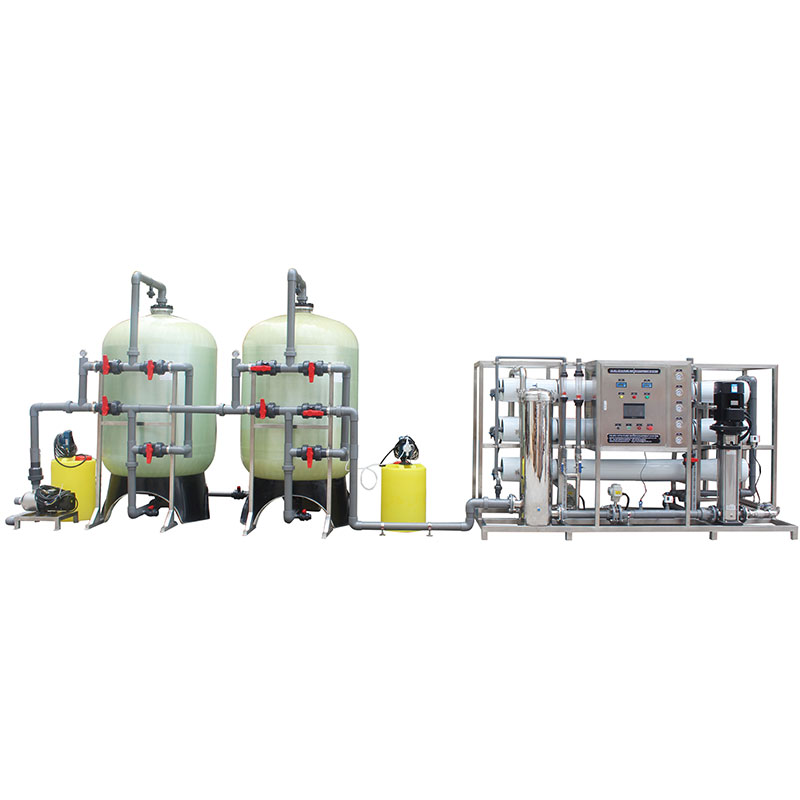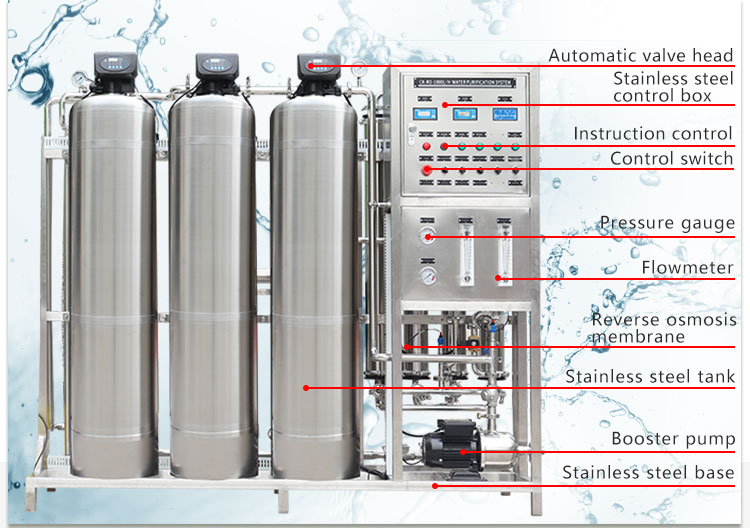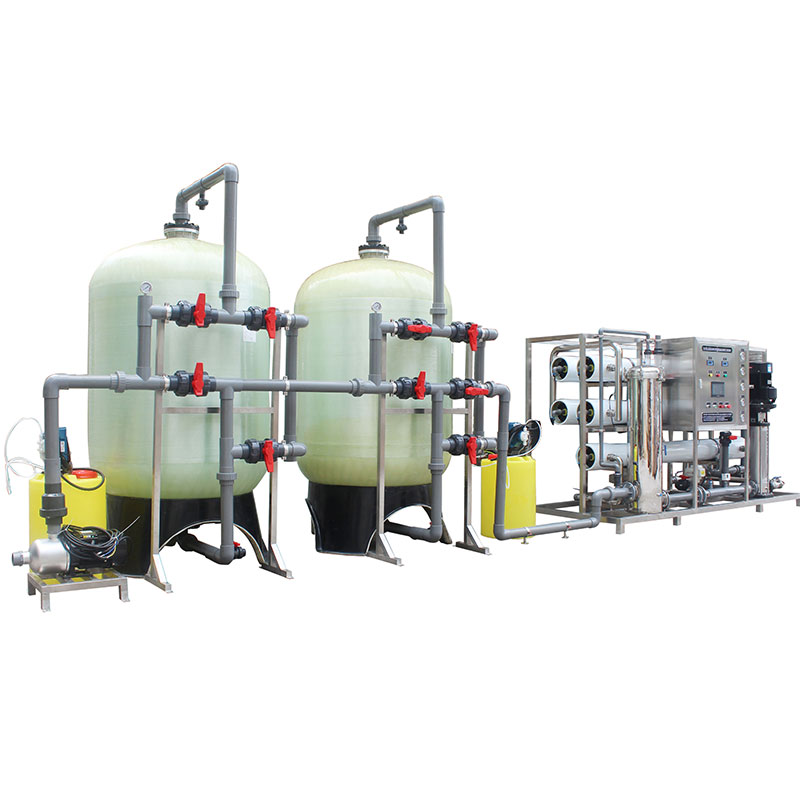Is reverse osmosis water banned in Europe? What are the main problems with RO systems?
Reverse osmosis water treatment systems have attracted global attention due to their high-efficiency filtering capabilities and wide application. However, there have been many controversies and discussions about the safety and effectiveness of this system, especially in Europe. Some people even claim that reverse osmosis water has been banned in Europe.
So, how credible is this statement? What are the main problems facing reverse osmosis water treatment systems?

What is the basic principle of reverse osmosis water treatment systems?
Before we delve into whether reverse osmosis water is banned in Europe, it is necessary to understand the basic working principle of reverse osmosis water treatment systems. Reverse osmosis (RO) is a technology that filters impurities from water through a semipermeable membrane. The principle is to use pressure to force water molecules through the membrane, while larger solute molecules (such as salts, minerals and organic matter) are retained on one side of the membrane to obtain pure water.
Reverse osmosis technology is widely used in the fields of household drinking water treatment, industrial pure water preparation, seawater desalination, etc. Due to its ability to effectively remove most impurities in water, especially in hard water areas, reverse osmosis systems are regarded as a very effective way to purify water.
Is reverse osmosis water banned in Europe?
There has always been a misunderstanding about whether reverse osmosis water is banned in Europe. In fact, there is no total ban on the use of reverse osmosis water in Europe. However, in some countries and regions, there are indeed some regulations and restrictions on the use of reverse osmosis systems, especially in public water supply systems and drinking water standards.
Take Germany as an example. Germany has very strict drinking water standards and advocates the retention of some natural minerals in water. The reverse osmosis system not only removes pollutants during the filtration process, but also removes essential minerals such as calcium and magnesium, which may be harmful to the human body in the eyes of some health experts. Therefore, Germany prefers to use other water treatment technologies rather than reverse osmosis systems in public water supply systems.
France has not banned the use of reverse osmosis water, but its government prefers to advocate the use of water treatment technologies with mineral retention functions. In France, reverse osmosis systems are mainly used in specific industrial fields and some places that require special pure water, while reverse osmosis systems are not widely promoted in terms of household and public drinking water.
The EU attaches great importance to the safety and nutritional value of water quality in terms of drinking water standards. According to the EU's Drinking Water Directive, member states need to ensure that the mineral content in drinking water meets certain standards. This standard indirectly restricts the use of reverse osmosis systems, especially if no minerals are added, reverse osmosis water may not meet EU drinking water standards.

What are the main problems with reverse osmosis water treatment systems?
Although reverse osmosis technology has significant advantages in water treatment, it also has some problems that cannot be ignored. These problems are not only the reason why some European countries restrict its use, but also the root cause of doubts about reverse osmosis water treatment systems worldwide.
Mineral removal
A major problem with reverse osmosis systems is their overly effective filtration capacity. Although reverse osmosis membranes can remove harmful substances from water, they also remove beneficial minerals such as calcium and magnesium in the water. The human body needs these minerals to maintain normal physiological functions, and long-term drinking of mineral-deficient water may cause malnutrition or other health problems.
Waste of water resources
There is a contradiction between the working efficiency of reverse osmosis systems and the waste of water resources. Since reverse osmosis membranes can only allow part of the water to pass through, a large amount of water is discharged as wastewater during the filtration process. Depending on the different system designs, the proportion of this wastewater may be as high as 50% or even higher. For some areas with scarce water resources, this waste is obviously unreasonable.
System maintenance and cost
Reverse osmosis systems require regular maintenance, including replacing membrane elements, cleaning the system, and monitoring water quality. These maintenance tasks not only increase the cost of use, but also have high technical requirements. If not properly maintained, the filtration effect of the system will be greatly reduced, and may even cause water quality problems.
Contamination of reverse osmosis membranes
The reverse osmosis membrane itself is also a potential source of contamination. Over time, bacteria and other contaminants will accumulate on the membrane surface to form a biofilm. These contaminants not only reduce filtration efficiency, but may also have a negative impact on water quality. Therefore, reverse osmosis systems require regular chemical cleaning to keep the membrane clean and functioning properly.
Changes in pH value
Reverse osmosis water usually has a lower pH value, which means it is more acidic. Acidic water may have an impact on human health, especially if it is consumed for a long time. In addition, acidic water may also cause corrosion to water pipelines and other facilities, increasing the complexity and cost of equipment maintenance.

Alternatives to reverse osmosis water treatment systems
Although there are the above problems with reverse osmosis water treatment systems, completely disabling or abandoning this technology is not a solution. In fact, in some cases, reverse osmosis technology is currently the most effective way to purify water. Therefore, many experts suggest that the existing problems of reverse osmosis systems can be addressed by improving their design and technology, or by combining them with other water treatment technologies.
A common improvement method is to add a mineral replenishment device after the reverse osmosis system. This device can re-add necessary minerals after water filtration to ensure that drinking water is not only clean but also contains ingredients that are beneficial to health. This combination technology has been applied in some European countries. Secondly, in order to reduce the waste of water resources, modern reverse osmosis systems are developing more efficient wastewater treatment technologies. For example, the use of multi-stage filtration systems or the addition of wastewater recycling devices can minimize the discharge of wastewater. These improvements are particularly important for areas where water resources are scarce.
In addition, reverse osmosis systems can be combined with other water treatment technologies to make up for their shortcomings. For example, the use of ultraviolet disinfection, activated carbon filtration or ultrafiltration technology can improve the efficiency and water quality of the overall water treatment system. In addition, the combination of these technologies can reduce the dependence on a single technology and reduce maintenance costs.





